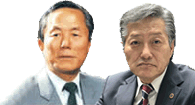On Saturday 22nd September, the British Taekwondo Council held a seminar entitled “Strength and Conditioning for Performance Improvement and Injury Reduction in Taekwondo”.
Run by Sarah Scott, a chartered physiotherapist (and taekwondo student herself), the course gave an overview of how specific exercises can not only improve physical performance and reduce injury in taekwondo but improve issues such as poor range of movement, or movement dysfunction.
Strength and conditioning exercises fall into several categories: resistance or weight training, plyometrics, speed and agility, endurance and core stability. However, as Sarah was at pains to point out, “not all training is transferrable to improving sports performance”, meaning that doing an activity like long-distance running may be a great way of losing weight or increasing endurance, but won’t necessarily improve performance specific to taekwondo. We need to better understand the physiological requirements of taekwondo in order to tailor precise exercises for the sport.
In taekwondo we especially use “reactive strength” – the fast stretching and recoiling of muscles - to generate maximum power whilst conserving energy. Plyometric exercises are best at developing reactive strength, and Sarah went on to explain specific research in this area. Most interesting was the maximum number of repetitions and ‘foot contacts’ recommended for any one training session; any more than this risked injury.
Alongside plyometrics, there are other methods to increase our “rapid force generation” – the ability to generate power quickly – and Olympic lifts, squats and deadlifts were recommended as particularly good for this. However, Sarah was keen to point out that good technique is key and should be mastered before making these exercises harder by adding weight or resistance.
In addition to reactive strength and force generation, taekwondo students need a good level of anaerobic energy, and interval training is the optimal method of improving this. Sparring practice, with its brief but intense bursts of activity followed by short rests, was in fact suggested as the optimal and most taekwondo-specific method of improving anaerobic ability in class.
The second half of the seminar concentrated on practical demonstrations of exercises currently used by elite taekwondo athletes, such as squats, lunges, hip bridge and calf raises. After a brief warm-up, we ran through the correct technique for these common exercises, looking at how certain injuries or issues such as collapsed foot arches, might prevent a student from achieving good technique.
What I found particularly useful was how these exercises might be adapted to cater for different students. Taekwondo classes will have a range of students with very different goals they want from the sport, some might have injuries, and there will be a mixture of ages, experience and abilities: all these factors mean that exercises need to be adaptable to the individual. Even something as straightforward as the press-up can be modified in multiple ways to cater for the student’s ability, thus enabling the whole class to participate, but to improve at their own level.
Sarah’s seminar was really informative with some great exercise ideas that I’m looking forward to showing our class. Her over-riding message was to thoroughly examine all the exercises we employ in class, to really question the purpose of each and how it can specifically improve our performance in taekwondo, whatever level we are training at.



 Log In
Log In
 Back
Back Write an Article
Write an Article Facebook
Facebook